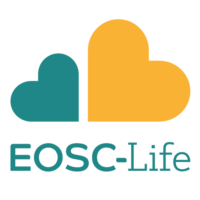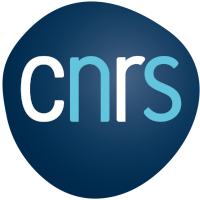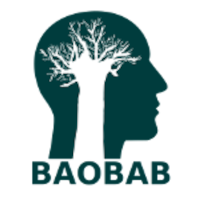QSM4SENIOR: Quantitative susceptibility mapping in the aging of the healthy brain.
Miguel Guevara1,2, Davy Cam3, Jacques Badagbon3, Michel Bottlaender2, Yann Cointepas1,2, Jean-François Mangin1,2, Ludovic de Rochefort3 and Alexandre Vignaud1,2
- CNRS BAOBAB UMR9027 Gif-Sur-Yvette, France;
- CEA NeuroSpin, Gif-Sur-Yvette;
- VENTIO, Marseille, France
Introduction:
The population of developed countries is aging, which is associated with an increase of neurodegenerative diseases. Several studies aim at documenting this phenomenon. One of them, The SENIOR study, consists in an annual follow-up examinations over 10 years of elderly healthy volunteers with several biomarkers (genetic, biological, imaging) [1]. It includes high-field 7T magnetic resonance imaging (MRIab) acquisitions for high-resolution brain characterization.
There is an increasing evidence that iron accumulates in the aging brain, therefore its quantification could be used as a biomarker for the evaluation of the normal brain aging as well as to measure the severity of certain pathologies [2][3]. Quantitative susceptibility mapping (QSM) provides a quantitative metric linked to iron load in specific regions of interest [4], and increased QSM values for the regions implicated with the neuropathologies have been reported [2]. The accumulation of iron at different ages has been mostly analyzed by cross-sectional studies, which do not allow to address it at individual level over time. Moreover, these studies have been mostly performed at 3T. Ultra-high magnetic fields can provide a greater sensibility and a higher resolution [5]. However these acquisitions can also be more vulnerable to artifacts or effects from strong field variations due to air/tissue interface that need to be filtered out [3].
The QSM4SENIOR project, supported by the EOSC-Lifec industry-academia collaboration call and presented in this work, aims at studying the accumulation of iron by using QSM in the SENIOR database. We implemented a phase pre-processing pipeline to reduce the presence of artifacts in the 7T MRI data, due to their higher inhomogeneities sensitivity to strong background field or arising from improper coil combination for the phase reconstruction (or both). The resulting filtered field was used it as input for the MEDI algorithm [6]. Moreover, the pipeline was deployed in the infrastructure provided by de.NBI Cloudd, providing an ISO27001-certified Openstack cloud infrastructure. Here, we show these preliminary steps. QSM data will then be correlated with age as well as with other biomarkers available in SENIOR, and the curated data will be FAIRified and made available for research.
Methods:
(I) Participants: 84 volunteers (50 -70 years old at the time of inclusion, 41 males/43 females, 78 right-handed and 6 left-handed) were selected from the SENIOR database [1]. 41 subjects present 1 visit at the time this study was conducted and 43 with 2 visits.
(II) Image acquisition: The MRI data was acquired at NeuroSpin (Gif-sur-Yvette, France) on a 7Tesla MRI system (Magnetom 7 Tesla scanner, Siemens Healthineers, Erlangen, Germany) 1Tx/32Rx Nova Medical head coil. Multi-gradient-echo acquisition (MGRE) was performed for QSM (TA=9:48 min, FoV=256 mm, voxel size=0.8 mm isotropic, TR=37 ms, TE=1.68 ms, ΔTE=3.05 ms, number of echoes=10, flip angle=30°, acceleration factor GRAPPA=3, 196 sagittal partitions, bandwidth=740 Hz/px, monopolar readouts) as well as B1+ and B0 maps for calibration and correction purposes. The T1-weighted MP2RAGE was also acquired (TR= 6000 ms; TE=2.96 ms; voxel size=0.75 mm isotropic). MGRE data was reconstructed using Virtual Coil Combination (VCC) [7].
(III) Cloud computing: Computing resources (14 cores – 32 Go RAM virtual machines with 200 Go volumes) were deployed and configured automatically to create a secure instance running the pipeline in the de.NBI cloud. Imaging data were encrypted on transit and at rest.
(IV) Data processing: The method consists in pre-filtering the phase data from the MGRE acquisition by using the information of the magnitude and phase from the ten available echoes. It is based on the method described in [8], where in order to isolate the brain internal field variations (Δ𝐵𝑖𝑛) the conjugate gradients algorithm of the normal equation Δ𝑊Δ2Δ𝐵𝑖𝑛=Δ𝑊Δ2Δ𝐵 is calculated, where 𝑊Δ is a diagonal matrix weighting each estimation of the Laplacian by the inverse of its error standard deviation. The unwrapping is included in the analysis by forcing the point by point difference between ]-π, π] when calculating Δ𝐵 using the modulo function. The processing starts with the calculation of the Laplacian of the field. In order to do that, the Laplacian of the phase for each echo k is computed (Δ𝐵𝑘), as well as its error (𝑊Δ𝑘), before being combined in the least-squares sense. The gradient norm of the field was also computed similarly.
- Neurospin 7T received funding from the France-Life-Imaging project – grant 11-INBS-0006
- This work has been supported by the Leducq Foundation large equipment ERPT program, the NEUROVASC7T project, the Institut Carnot.
- This project has received funding from the European Union’s Horizon 2020 research and innovation programme under grant agreement No 824087 – European Open Science Cloud in Life Sciences.
- This work was supported by the BMBF-funded de.NBI Cloud within the German Network for Bioinformatics Infrastructure (de.NBI) (031A532B, 031A533A, 031A533B, 031A534A, 031A535A, 031A537A, 031A537B, 031A537C, 031A537D, 031A538A).





